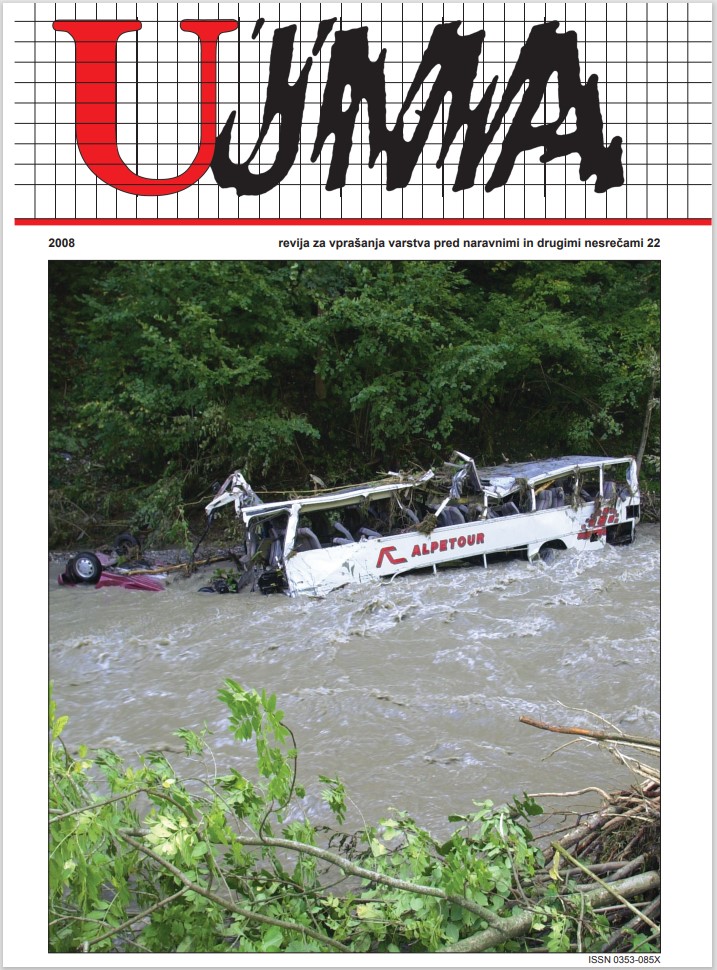THE ARMY AND COUNTER-MINE OPERATIONS AROUND THE WORLD
Abstract
There are over 75 countries in the world today facing issues of mines in the ground and unexploded explosive ordnance (UXO). Until nowadays, the role of troops in mine actions in the world (MAW) was ill-defined and uncharacteristic. Troops may play an important part primarily in two parts of MAW; namely, humanitarian demining (HD) and mine stock disposal. On the other hand, their role in the remaining three pillars of MAW - assistance to mine victims, advocating a ban on the use o fanti-personnel landmines, and raising awareness on mine dangers - is rather marginal and insignificant. Within the framework of MAW, armed forces may operate in three different formations, namely as local armed forces (LAF), as visiting armed forces (VAF), or as military or technical advisers. The example of Kosovo shows that in the initial stage of the MAW process, the VAF (KFOR) may play a very important part; within the framework of HD, the VAF are most successful in the UXO and in the activities of battlefield clearance. On the other hand, the VAF are less helpful in the classic demining of mine fields, in accordance with the IMAS standards. Kosovo is also an example of a cooperation between military and civil experts in charge of MAW, and manifests that such cooperation my offer excellent results. In contrast to Kosovo, in Lebanon it was the LAF, t.i. the Lebanese Armed Forces, who played the main role in MAW from the beginning; however, the Lebanese Armed Forces only managed to deal with the MAW issue effectively through American assistance. The Lebanese Armed Forces are fully in charge of and coordinate the MAW process in the area under their control, while conducting all MAW activities in accordance with the IMAS standards. Until 2001, the VAF (UNIFIL) carried out demining exclusively for their own requirements; after that year, however, the creation of the UN mine centre made UNIFIL more actively involved in MAW. After 2007, following an increased danger posed by the newly jettisoned cluster ammunition, UNIFIL largely adapted its activities to the requirements of MAW. Both examples demonstrate that the LAF are not capable of playing a prominent part in MAW without external assistance and training. The Slovenian Armed Forces (SAF) lack the appropriate capacities to engage actively in the process of MAW. It gained experiences only from mine stock disposal which it carried out in Slovenia entirely by itself. On receiving additional training and equipment, members of the SAF could participate primarily in the processes of UXO and battlefield clearance, while they are not so much qualified to take part in the classic demining of mine fields.
References
Bizjak, M., 2000/2001. Mine in tehnike razminiranja, uporabljene na Kosovu. V: Ujma, 14–15, 2000/2001.
Blagden, P., 2001. Military involvment in humanitarian demining and its effect on equipment development. Defence procurement analysis.
Blagden, P., 2004. Anti-Personnel Mines: Friend or Foe. A study on the military utility of anti-personnel mines. ICRC.
Filippino, E., 2003. The Role of the Military in Mine Action,Geneva.
Filippino, E., 2005. Mine Action: Lessons and Challenges, Geneva.
Gard, G. R., 2003. Alternatives to Anti-Personnel Landmines. Vietnam Veterans of America Foundation.
Informativni bilten o zaključki uničevanja PPM, PEP, Poček 2003.
Lardner, T., 2005. A Study of Manual Mine Clearence. Geneve.
Lardner, T., 2007. Land Release: A guide for mine and ERW affected countries. Geneva.
Maslen, S., 2007. A Guide to Mine Action and Explosive Remnats of War. Geneva.
Mine Action Support Group, Conference, Priština 22.—23. Oktober 1999, delovno gradivo.
Orifici, D., 2007. A Guide to Cluster Munitions. Geneva.
Orifici, D., 2007. A Guide to Mine Action and Explosive Remnants of War. Geneva.
Šikavica, S. S., 2000. Ka svetu brez mina. Beograd.
Thompson, H., 1999. Landmine and Unexploded Ordnance in Kosovo.
Elektronsko dopisovanje
Steve Saunders 2001 – 2006 - EOD Operations Officer OKPCC/Kosovo.
Chris Clark – Programme Manager UN MACC Southeren Lebanon.
Downloads
Published
Issue
Section
License

This work is licensed under a Creative Commons Attribution-NonCommercial-NoDerivatives 4.0 International License.
The articles are made available to the public under Creative Commons Attribution-NonCommercial-NoDerivatives 4.0 International (CC BY-NC-ND 4.0).


